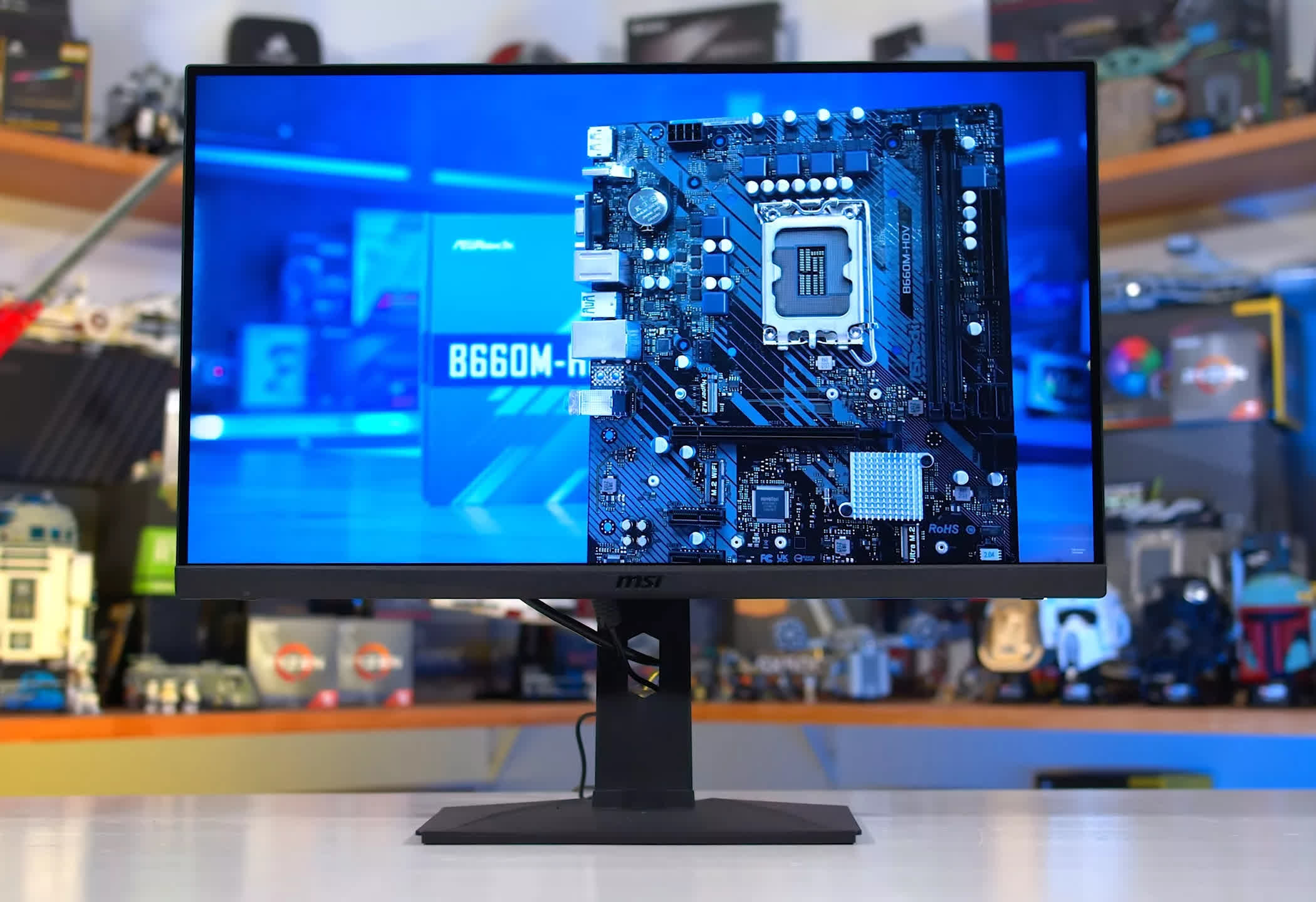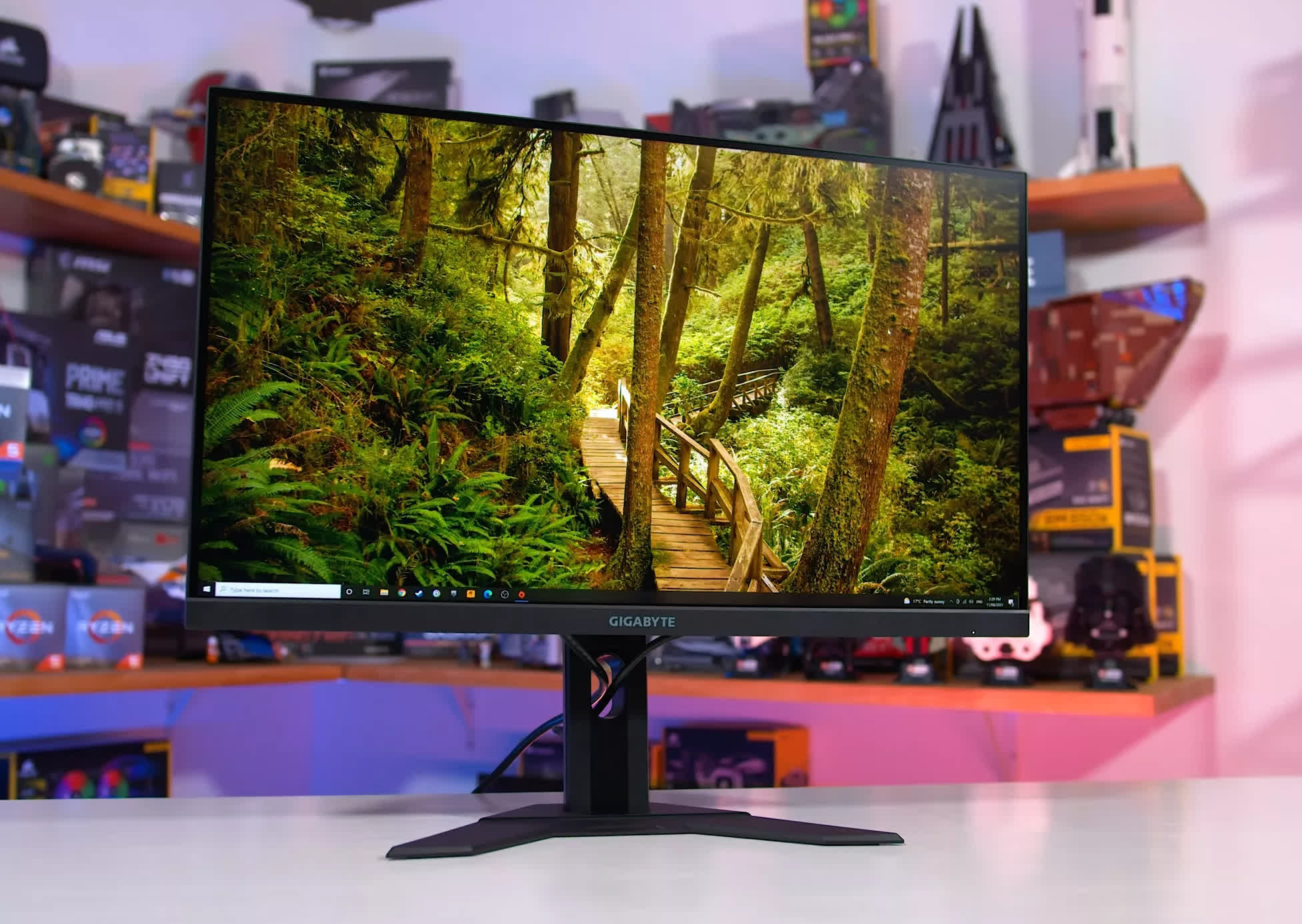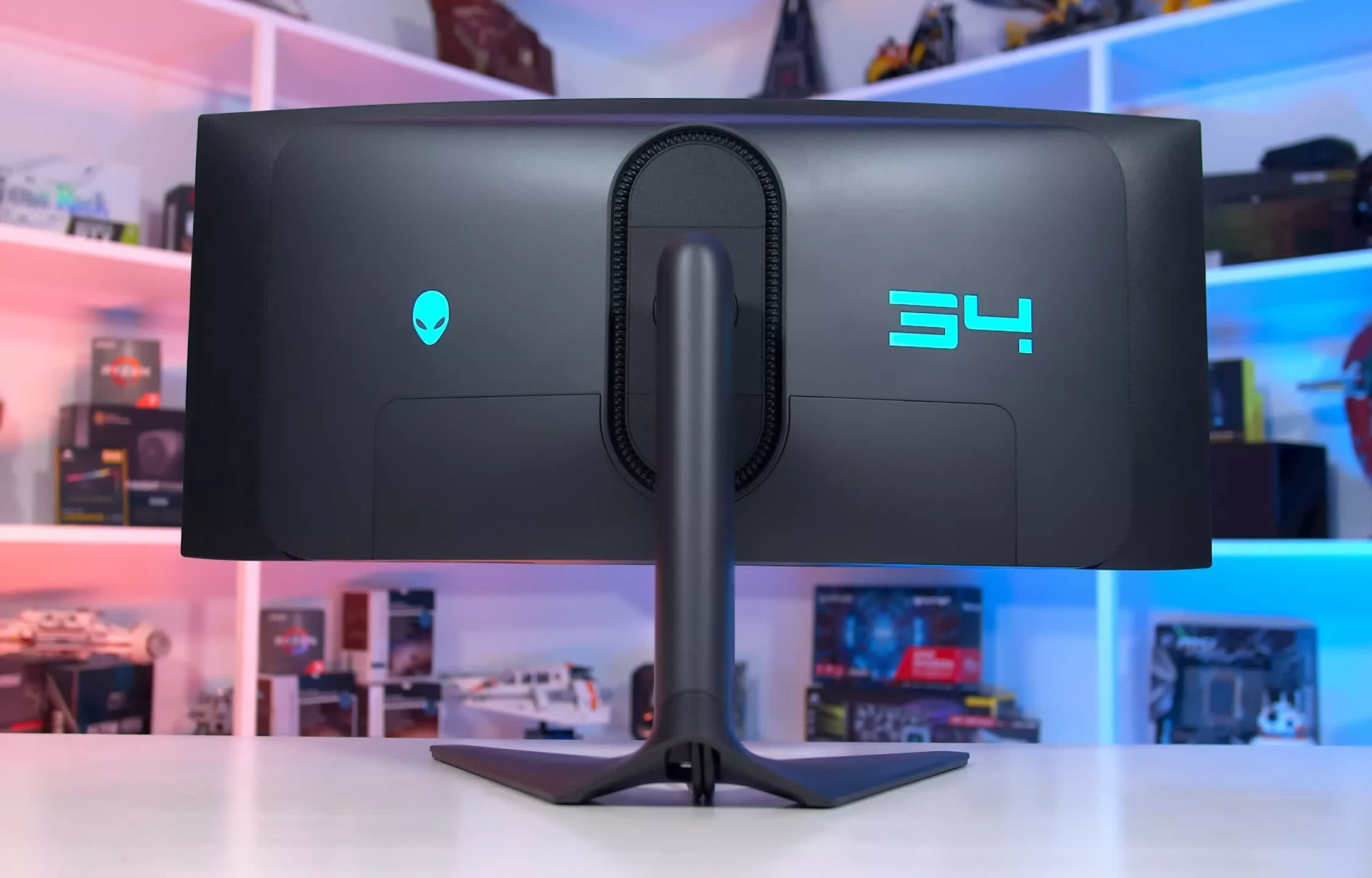It's time for a thorough update of our gaming monitor buying guide. To make this guide easier to navigate, we've broken down our recommendations into sections that cover 1080p, 1440p, 4K, ultrawide and HDR gaming monitors, with various choices available in each category based on refresh rate, display size, and budget considerations.
Since the last update to this guide, we've tested plenty of new and interesting products that are worth including, plus several of our favorite monitors have also dropped in price, which is always nice to see.
For choosing the best gaming monitors we generally recommend only the models we have tested ourselves or ones that are very similar (use the same panels). It's always worth going back and checking out the dedicated monitor reviews here on TechSpot or at Monitors Unboxed on YouTube. Most importantly, the recommendations below are the byproduct of our testing results and research coming out of those reviews.
- 1440p - Best Budget
- 1440p - Best Value
- 1440p - Best Overall
- 1440p - Best Esports
- 4K - Best 27-inch
- 4K - Best 32-inch
- 4K - Best Overall
- Best HDR
- Best Ultrawide
- Best Budget 1080p
- Best 1080p for Esports
Best Budget 1440p Monitor
MSI G274QPF-QD | Gigabyte M27Q-P | LG Options

If you're after an excellent bang for the buck 1440p gaming monitor with a refresh rate in the 144 to 180 Hz range, we don't see much point in spending more than $280 right now, as there are plenty of quality options below that price point. Our picks of the bunch are either the MSI G274QPF-QD at $260 or the Gigabyte M27Q-P at $270. Both are very similar and will provide a great gaming experience.
Both monitors are 27-inch, 1440p, 170Hz IPS LCDs and, although they use different panels, their overall performance is quite similar. The MSI option is slightly better tuned for motion performance, but for many buyers, the difference will be hard to distinguish. The Gigabyte model has a more accurate sRGB mode and includes a KVM switch, while the MSI model boasts a wider color gamut. Both are nicely balanced across the most important areas of monitor performance and, given they occupy a similar price range right now ($260 to $270), it's a toss-up for us.
Also in this price range, we've recommended several LG monitors in the past, including the LG 27GP83B, and we still think they are good buys, provided you can get them for a similar price to the Gigabyte and MSI options. The 27GP83B is exactly $280 at the moment but often fluctuates back up to $400, where it simply isn't good value. Monitors like the 27GP83B and its very similar LG counterparts offer slightly better response time performance but a weaker contrast ratio.
Best Value 1440p Monitor
MSI G274QPX 27"

For high refresh rate shoppers seeking a 1440p 240Hz monitor, it's hard to overlook the MSI G274QPX at $330, especially since it's now cheaper than when we reviewed it at $380. It's a 27-inch 1440p 240Hz IPS LCD with performance similar to previous budget monitors with these specs, like the (now more expensive) Gigabyte M27Q-X.
It offers high brightness, a very good contrast ratio, a flat panel with great viewing angles, and a decent sRGB mode, though its response times are only typical to average. There are no major deal-breaking flaws, and we think it's hard to pass up at such a low price.
We also think the LG 27GR83Q is pretty good, and a better monitor than the G274QPX due to its superior response time tuning and calibration. However, in the United States, it's priced at around $500. It's a quality product but not worth the $170 premium over the MSI. Similarly, with the M27Q-X currently at $400, its performance is too similar to the more affordable MSI to earn our recommendation.
Best Overall 1440p Monitor
Asus ROG Swift OLED PG27AQDM 27"

If you're seeking the overall best 1440p gaming monitor, that would be the Asus ROG Swift PG27AQDM, a 27-inch 1440p 240Hz OLED display. This product excels in many ways, delivering motion clarity that surpasses most LCD monitors and closely rivals 360Hz models.
Even if HDR gaming isn't a primary interest, the PG27AQDM is excellent for competitive multiplayer gamers due to its speed and high refresh rate. It becomes even more appealing if you play a variety of games, including both multiplayer and single-player titles. This is due to the outstanding HDR capabilities of the OLED display.
Deep zero-level blacks, per-pixel local dimming, and good brightness levels contribute to a stunning HDR gaming experience. However, there are some drawbacks, such as weak text clarity and the risk of permanent burn-in, making it less suitable for productivity tasks. But for 1440p gaming, few products compare to this one.
If you're hesitant to spend $1,000 – and understandably so, as it's a significant investment – then the AOC Agon Pro AG276QZD might be appealing. It uses the same OLED panel but doesn't get as bright and is priced at $800.
Best Esports 1440p Monitor
Asus ROG Swift PG27AQN 27"

The Asus ROG Swift PG27AQN is also worth considering for its exceptional motion clarity featuring a 1440p 360Hz IPS LCD panel. This display slightly outperforms Asus' OLED in motion while also delivering better input latency, thanks to its higher refresh rate and the option of clarity-enhancing backlight strobing through ULMB2.
It's a well-calibrated, visually appealing display. Although still pricey, its price has recently been reduced to $900, a $150 decrease from its original suggested retail price.
It's definitely worth considering, though for most people, we would recommend the PG27AQDM instead (above).
Best 4K 27-inch Monitor
Gigabyte M27U | Gigabyte M28U | MSI MAG281URF | LG 27GR93U

If you're in the market for a 4K high refresh rate gaming monitor, the pricing and quality of options are the best they have ever been. Just a few years ago, $500 would have only secured you a 1440p 144Hz monitor; nowadays, the same price gets you 4K.
For those seeking a 27-inch 4K monitor, there are three or four standout picks currently worth considering: the Gigabyte M27U, the MSI MAG281URF, and the Gigabyte M28U. All of these monitors can regularly be found for around $450 to $500, which is the sweet spot for these specifications. Given the close performance of these products, it might simply come down to pricing in your region and availability.
The Gigabyte M27U is a 27-inch 4K 160Hz IPS LCD and offers an excellent balance across all areas of performance, from response time speed to color quality. Its motion performance is on par with other modern IPS LCDs, and the panel is decently optimized for variable refresh rate gamers; there are no glaring flaws here. We're looking at a wide color gamut, great brightness, reasonable factory calibration, and the excellent resolution of a 4K panel suited for both productivity work and gaming. There are no standout areas in performance, but no dealbreaker flaws either.
Close in performance to the Gigabyte M27U are the Gigabyte M28U and MSI MAG281URF, both using different panels than the M27U but are products we've recommended in the past for their excellent value.
These alternatives are slightly better tuned for high refresh rate gaming and have higher contrast ratios, but the M27U is much brighter and a bit better tuned for variable refresh rate gaming. The best choice depends on your specific needs, and given all are priced below $500 these days, it's hard to make a wrong choice.
In some regions, the LG 27GR93U could also be worth considering, as it may be similarly priced to these Gigabyte and MSI models. However, in the United States, it's currently too expensive to recommend.
Best 4K 32-inch Monitor
LG 32GR93U | Lenovo Legion Y32p-30 | Gigabyte M32U
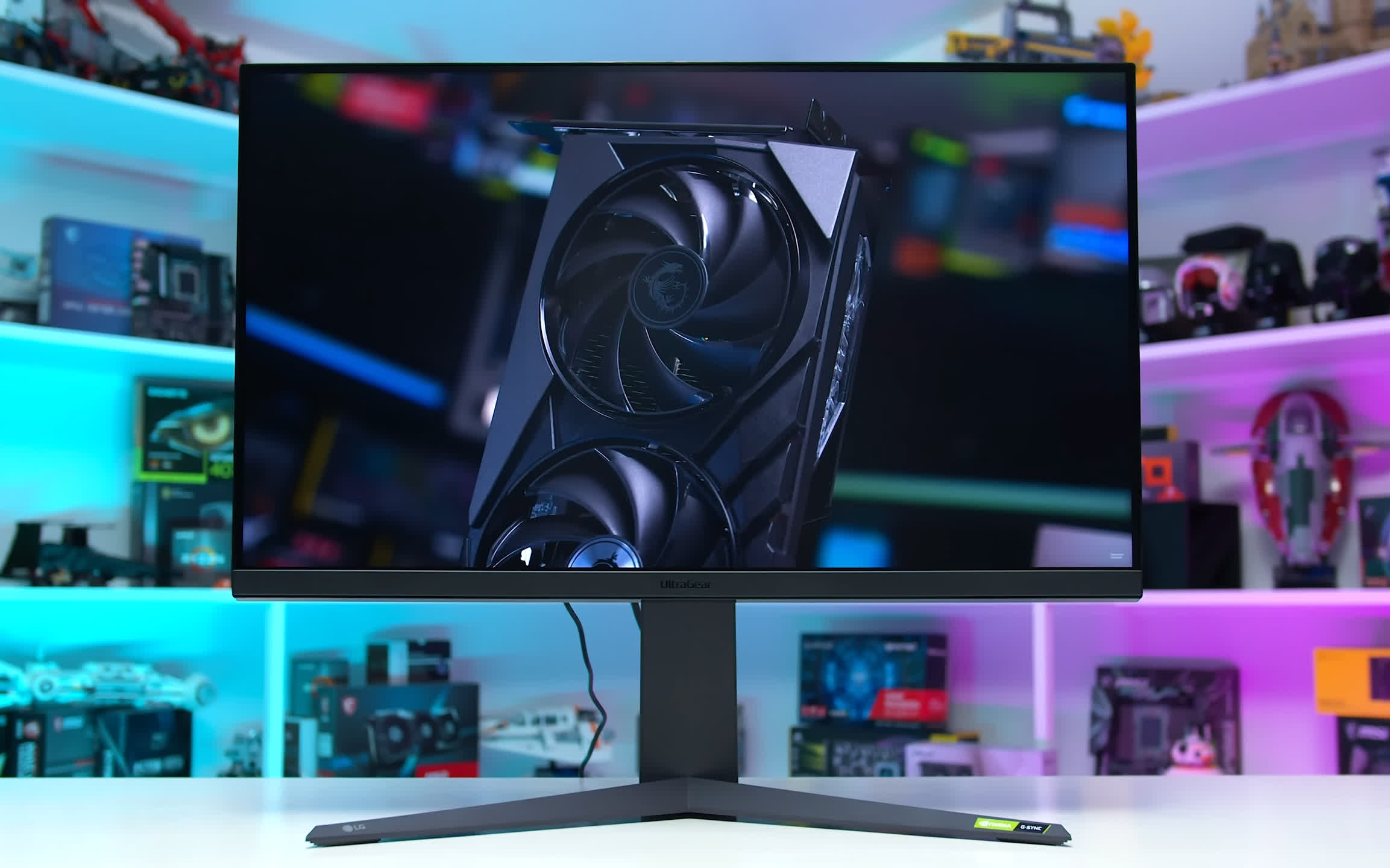
If you want to play at 4K but want a larger 32-inch monitor, our top picks include the LG 32GR93U at $800, the Lenovo Legion Y32p-30 at $700, or the Gigabyte M32U at $650. The most expensive of this group, the LG 32GR93U, is the top performer, offering the most optimized motion performance and best feature set.
The Lenovo is a great mid-range option that still provides a decent balance between speed and visuals, while the Gigabyte M32U is also an excellent choice for value. We elaborate a bit more on these products in our dedicated "Best 4K Gaming Monitors" feature.
If you're looking for a high-end 4K gaming monitor for HDR gaming and elite speed, at this point, we would strongly recommend waiting for OLED options set to debut in the first half of 2024.
Even if you aren't set on OLED and are currently considering LCD options like the Samsung Odyssey Neo G7, we think it's close enough to 2024 to justify waiting to see how those products perform and are priced. If they prove to be highly competitive, this will likely lead to a price drop in today's 4K HDR offerings, which would be beneficial.
What we do know is that in 2024, we will see new 4K 240Hz OLED monitors, starting with 32-inch QD-OLED options announced by Asus, MSI, and Dell.
There are also plans for 32-inch WOLED, and 27-inch 4K 240Hz using both QD-OLED and WOLED, so a wide range of options will soon be available. We expect most of these products to be relatively expensive, similar to today's LCD options offering true HDR. We're looking forward to learning more at CES 2024 in January, which is just a few months away and worth waiting for.
Best HDR Monitors
Asus ROG Swift PG27AQDM | Alienware AW3423DWF

When buying a new HDR monitor, be very careful with products that advertise HDR without actually offering any real HDR capabilities. Monitors often advertised as DisplayHDR 400 simply aren't worth buying or considering in any way. If you want a true HDR product, fortunately, there are some great products on the market. Yes, they are quite expensive, but the experience they offer is excellent.
To determine which HDR monitor is best for you, we'd recommend first deciding between a regular 16:9 format or an ultrawide, and then considering screen resolution and display technology.
For those after a 16:9 monitor, the best in our opinion is the Asus ROG Swift PG27AQDM. As we mentioned earlier, this is a 27-inch 1440p 240Hz OLED with excellent motion clarity and elite HDR performance. It's a highly versatile product that's well suited to both competitive multiplayer gaming and visually stunning single-player experiences, thanks to its strong combination of features and performance.
It's bright, especially for a WOLED panel, vibrant, fast, and responsive. It's really hard to go wrong here, although the drawbacks of OLED, like burn-in and subpixel layout, do affect this monitor's usability for desktop work. We also previously mentioned the AOC Agon Pro AG276QZD, which is a great lower-cost option, offering not quite the same level of performance as the PG27AQDM, but using the same OLED panel.
If you're looking for something larger or higher resolution for 16:9 HDR gaming, as we said in the 4K section, we would strongly recommend waiting until 4K OLED monitors are released in the first half of 2024. There are some good products we've recommended before, like the Odyssey Neo G7 and LG C3, but with a new range of capabilities set to be available in the next six months, including 32-inch 4K 240Hz OLED, it just makes sense to see what they offer in terms of price and performance before making an expensive monitor purchase. We'd hate to invest $1,000 in a monitor right now, only to have it superseded within months.
If you're interested in the ultrawide path and feel that format is right for you, you've certainly made a great choice. In our opinion, the QD-OLED ultrawides are some of the best HDR gaming screens available today. We also personally like the 21:9 format for its better immersion than standard 16:9 monitors, but it's not for everyone. If it does sound like something you're after, let's talk about the best ultrawide monitors, as the top choices there are also our picks for ultrawide HDR...
Best Ultrawide
Alienware AW3423DWF 34" QD-OLED

The best ultrawide category features a stark split between the high and low ends of the market. In our opinion, if you're after an ultrawide, you should either spend big and grab a QD-OLED for over $800, or opt for a budget model around $400. Anything priced between these figures typically isn't worth buying, as it either offers only a minor upgrade over our value picks or a significant downgrade from the top picks.
For high-end shoppers, it's clear that the ultrawide market is now dominated by QD-OLED monitors, all offering a 34-inch 3440 x 1440 QD-OLED panel at up to 175Hz.
Currently, the standout choice is the Dell Alienware AW3423DWF, which received a vital firmware update in mid-2023 that improved HDR accuracy and brightness. It's also one of the most affordable options on the market, on sale for just $800, down from its normal price of $1,000. Given its improved performance and great price, we'd recommend it over the Samsung Odyssey OLED G8, which would be our second choice.
The AW3423DWF offers a 34-inch 3440 x 1440 165Hz QD-OLED panel with a 21:9 aspect ratio and 1800R curve. The highlight is its excellent HDR capabilities, including zero-level blacks, per-pixel local dimming, and a high peak brightness of 1,000 nits, all with decent HDR accuracy, provided you are running the latest firmware. As an OLED, it's also very fast in terms of response times, offering great motion clarity, comparable to some of the 175Hz competitors. The difference in refresh rate is so minor that it's basically negligible.
We also appreciate the Alienware's decent build quality, use of full-size display inputs, low input lag, and largely inaudible fan. However, like many OLED monitors, we wouldn't recommend it for productivity work, mostly due to the risk of permanent burn-in, as well as some minor concerns about text quality. These QD-OLED monitors also have poor screen coatings and composition that require optimal placement of lights in your room to reduce reflections, which is something to keep in mind.
Best Budget 1080p Monitor
AOC 24G2SP 24"

In the 1080p product class, it's quite a simple story these days. You're either after an entry-level monitor to get started with PC gaming, and we believe 1080p is still a suitable choice if you have less than $200 to spend, or you're more interested in a super high refresh rate option for competitive gaming where features like backlight strobing and fast response times are a priority.
For those after an entry-level gaming monitor, our recommendation continues to be the AOC 24G2SP, which has come down in price since our last update to just $140. This display offers excellent value at that price, providing a decent quality 24-inch 1080p 165Hz IPS LCD panel. Occasionally, it's priced too high, around the $200 mark, but anything below $160 is sensible, and especially at $140, it's a great deal.
The 24G2SP is a solid choice, offering great response time performance in its class, solid color quality, and handy features like a height-adjustable stand that you don't always get at this price point. The overall package AOC is offering is nicely balanced between gaming performance and image quality, so we're comfortable continuing to recommend it. The main negatives are simply that it doesn't lead the class in any area: it's not the highest resolution, nor the highest refresh rate, nor the best-performing display. But its well-rounded nature makes it a strong choice, especially for just $140.
Some might question why you'd buy a 1080p monitor today, but the simple answer is that 1440p monitors aren't that affordable yet. For most gamers, we would recommend one of our 1440p choices instead. However, if you don't have $250 to spend, then going for a 1080p monitor is your option – and the 24G2SP offers something great here.
Best 1080p for Esports
Asus ROG Swift Pro PG248QP | BenQ XL2566K

If you're in the market for a premium monitor for esports gaming, there are two main options well-suited for this task, but be prepared for a hefty price tag. These are the Asus ROG Swift Pro PG248QP, priced at a steep $900, and the comparatively more affordable BenQ XL2566K at $600. Both are 24-inch 1080p TN LCD monitors; the Asus model reaches up to 540Hz, and the BenQ up to 360Hz, both offering elite-tier backlight strobing support.
The main advantage of choosing the Asus PG248QP is its higher refresh rate. At 540Hz, it is somewhat visually clearer than 360Hz for competitive gaming, slightly smoother, and provides lower input latency. ULMB2 works exceptionally well on this monitor to increase clarity through backlight strobing, though it only functions at refresh rates above 360Hz and for the best experience, requires an Nvidia GPU. The Asus model also has faster response times, but at $900, it's so expensive that we find it hard to recommend to most gamers.
The BenQ XL2566K, while still pricey, is more reasonable and primarily designed for esports professionals. At 360Hz, it's not as fast or clear as the PG248QP, but it features BenQ's excellent DyAc+ backlight strobing technology, which is more versatile than ULMB2 as it supports lower refresh rates. For example, you can achieve great strobed clarity at as low as 100Hz, and it works flawlessly with all brands of graphics cards. While still a challenging recommendation for mainstream buyers, it targets a specific market and excels in meeting its needs.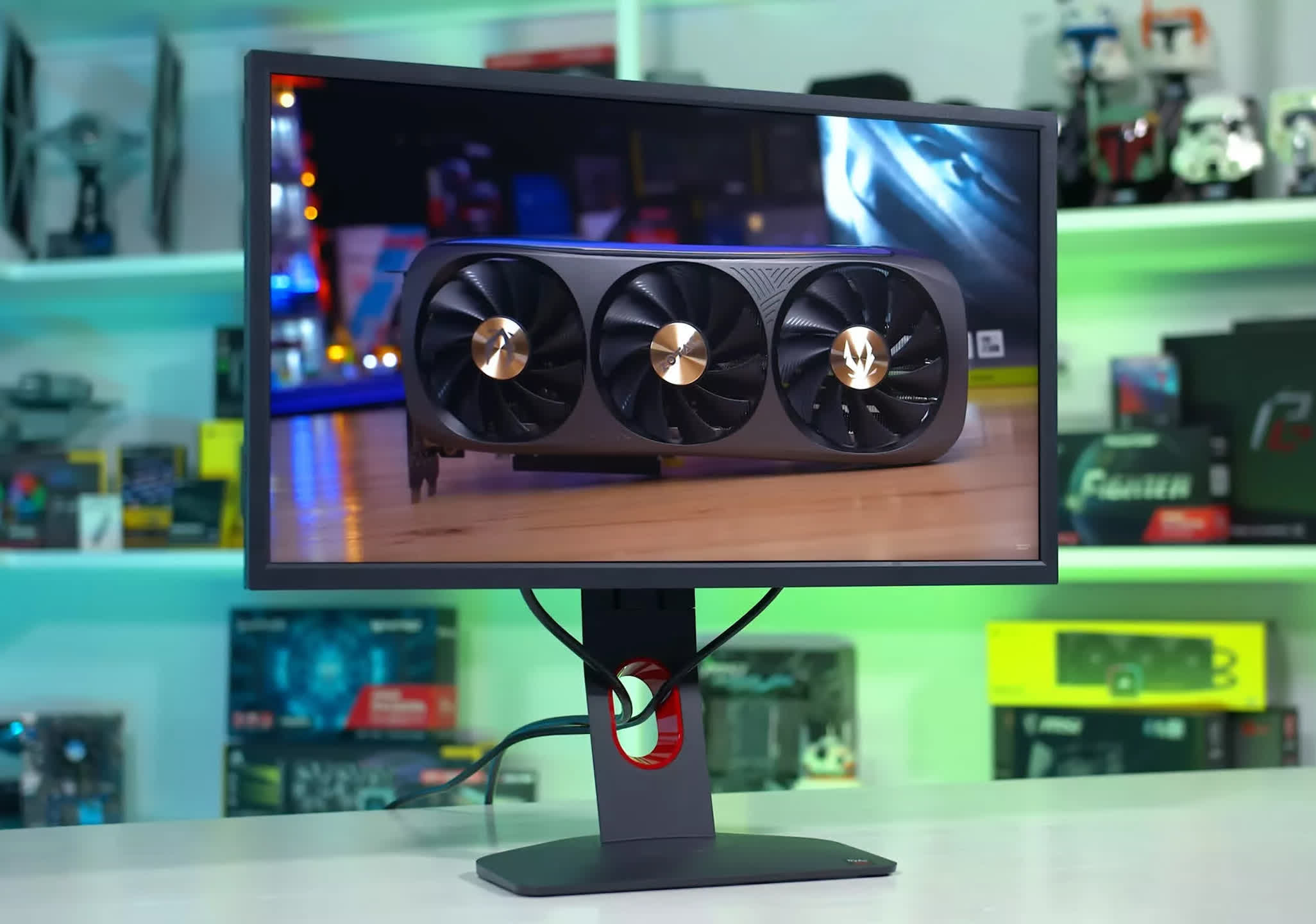
However, as both the Asus and BenQ models use TN panels, they are exclusively designed for high-performance gaming and not visual quality. They have poor viewing angles and are unremarkable in other aspects of image quality, such as contrast ratio or color gamut. The PG248QP is the better-calibrated monitor and even offers some wide gamut capabilities, but still, their primary use case is competitive gaming, focusing on presenting enemies with the greatest possible clarity.
Masthead credit: o_0verkill_o



